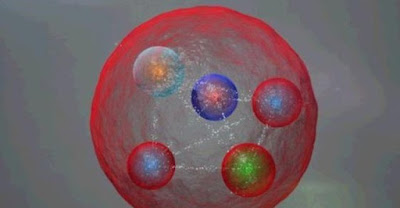Discovered new types of atomic particles
Scientists working with the Large Hadron Collider (LHC) has announced discovery of a new type of particle, called pentaquark.
The discovery involves quarks - elementary particles make up the protons and neutrons in the atomic nucleus. New particle called the pentaquark, meaning its structure consisting of 5 quarks. It was only recently, physicists have only seen the atom with constituents from 2 or 3 quarks.
The existence of particles is inferred to pentaquark first time in the 1960s, however, similar to the Higgs particle (also called the "God Particle"), scientists can not prove the existence its at for decades until it was discovered in the LHC, the largest particle accelerator and provide the most powerful accelerator in the world, is designed to research, breaking the limits and default the standard model - the current fundamental theories of particle physics.
In 1964, two physicists Murray Gell Mann and George Zweig had hypothesized the existence of subatomic particles quarks independently. They suggested that the key component of atomic particles - baryons and mesons - is best explained if they themselves composed of particles other components. Zweig uses the term "aces" for new building blocks according to hypotheses, but Gell-Mann called them nuts "quark".
Zweig model of Gell-Mann and also suggest the existence of other states of quarks, such as pentaquark. Nuts this hypothesis is to be made up of four quarks and one anti-quark particle.
In the mid 2000s, many researchers claim to have found particles pentaquark, but their findings were trials later dismissed. "This is also why we are very careful to submit a report on its new study," Patrick Koppenburg, co-coordinator for the LHC physics in Organization for Nuclear Research in Europe (CERN), said.
In the new study, experts physicists learn how a subatomic particle called Lambda b decay or converted to 3 other particles inside the LHC. Analytical results reveal, the intermediate state occasionally involved the production of three particles. The intermediate states that are named Pc (4450) + and Pc (4380) +.
Tomasz Skwarnicki physicists from the University of Syracuse (USA), a new member of the research team, said he and his colleagues examined every possibility of the signal on and concluded that they can only be explained by the state pentaquark.
LHC spokesman Guy Wilkinson commented: "pentaquark not just a new type of particle ... It represents a combination of quarks in a form never previously observed, in more than 50 years of research to try experience. Look at its features can allow us to better understand how normal matter how constituted. "











0 comments:
Post a Comment
Note: Only a member of this blog may post a comment.